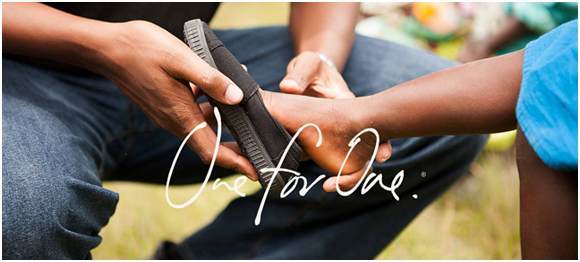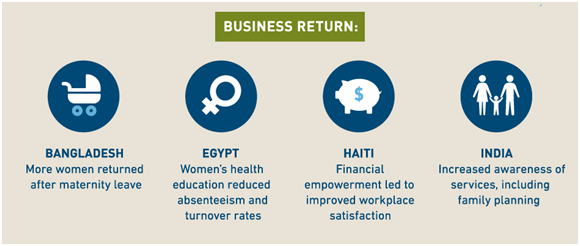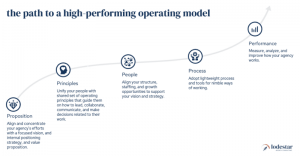— February 15, 2018
Why does your business exist?
If your answer is to sell products and services, sorry, but you’ve failed this one-question exam.
Of course you get into business to make money and be successful, but if that’s your only goal, your audience will sniff out your company as one that is soulless and not committed to anything beyond the mighty dollar.
However, if you’ve properly targeted your audience, you understand that you exist because you want to solve a problem, answer a question or satisfying an emotional want or need.
If you can express that sentiment, you will sell more products and services, because you will be selling things like hope and dreams. That’s where social responsibility marketing comes in, because this type of marketing communicates beneficial actions your company takes that are directly tied to your products and services, or tied to your company’s culture.
Done right, social responsibility marketing can yield big results, because it builds trust in your audience about your business beyond what you are selling.
Let’s take a look at several brands that are excelling at this marketing to see how you can develop it for your business.
1.TOMS Shoes’‘One for One’
From the time the company was founded, TOMS pledged to give away one pair of shoes for every pair it sold.
This concept was born out of the reason that TOMS founder Blake Mycoskie started the company.

After a trip to Argentina where he saw impoverished children with no shoes, Mycoskie crafted a simple, comfortable shoe that would fit the needs of most shoe customers.
The results were fantastic, and people began buying TOMS shoes in significant numbers, knowing that each purchase was providing free shoes to a child in need.
TOMS quickly branded itself as a premier socially conscious business that made customers feel good about buying, and the tangential effect was incredible employee morale.
The takeaway is that TOMS found a way to tie its core product (shoes) directly to its social responsibility goal of providing free shoes. It gambled that its target audience had the same desire to do a good deed while also buying a pair of affordable, quality shoes for themselves.
If you can find a way to tie in your product or service to something that impacts a community of underprivileged, you can make social responsibility a big driver for your sales.
2.People Water’s ‘Drop for Drop’
People Water is a purified water bottling company that is out to make money. But it’s chosen a unique way to do that, because the company sets aside a percentage of every bottled water it sells to build a new well in an underdeveloped country.
The company is committed to providing clean water, which is one of the scarcest commodities in poorer countries.
It does so by taking a portion of its sales and putting it toward building or restoring wells, and by also providing water purification systems and clean-water solutions to places most in need.
People Water makes no bones about wanting financial success, but by tying that success to a much larger, more important goal, it encourages prospective buyers to jump aboard its goal of changing the world one drop at a time.

How can your business mimic this type of social responsibility marketing that is larger than what you’re selling?
Well, if you’re a bookseller, you could donate books to communities that where literacy is a problem, or you could donate a percentage of your sales to help fund the building of local libraries that are in disrepair.
3.Levi Strauss’ ‘Workers Well Being’
Not all social responsibility can be tied directly to your product or service, but it doesn’t mean that you can’t find ways to make an impact. Sometimes, that impact starts from within your own company, then has positive effects in your community.
One example is Levi Strauss, which launched a Workers Well Being campaign in 2011 with the goal of improving the lives of its apparel workers in the U.S., and at factories throughout the world.
The initiative addressed employee needs through comprehensive surveys that sought to discover what was needed at the workplace to make workers happier and more productive.
Levi Strauss has improved its labor compliance, provided greater health security for its workers, improved gender pay inequality, increased the length of time women can go on maternity leave, provided education on reproductive health, provided onsite health services for workers, and created a more efficient supply chain.
By 2025, Levi Strauss hopes that 300,000 of its workers will be working under the Workers Well Being initiative.

You don’t have to be a giant brand like Levis Strauss to implement worker well being programs. In fact, smaller companies can do this more efficiently, because they don’t have as many workers, and responses can be tabulated in a short period of time.
Happy employees are productive employees who want to do well for their company, because they feel more connected and more empowered by their supervisors.
Taking stock of the needs of your workers and how you can improve work processes and the work environment is not only socially responsible, it often pays off in ways that boost your bottom line.
Harness the Power of Social Responsibility
Businesses that find ways to impact their communities beyond what they sell are not only expressing their social responsibility, they are also challenging their target audience to come along on the journey.
Social responsibility works best when your company’s goals are aligned with impacting others whether it’s directly through your products and services, or through initiatives designed to improve lives. Either way, the payoff can be considerable, and the reputation of your business will also take a giant leap.
Digital & Social Articles on Business 2 Community
(109)








